Sultan Al-Ashraf Qaytbay Mosque and Mausoleum is a significant Islamic architectural complex in Cairo, Egypt. The complex was built between 1470 and 1474 by the Mamluk sultan al-Ashraf Qaytbay. The mosque is attached to Qaytbay’s mausoleum, and other parts of the complex include residential structures, an animal drinking trough, and a smaller tomb.
The mosque is one of several monuments sponsored by Sultan al-Ashraf Qaytbay. He was a great patron of Mamluk architecture, as attested by the many buildings he commissioned and the refinement and mastery of artistry displayed in them. The mosque is known for its intricate architecture and unique design, which reflects the artistic and cultural heritage of the Mamluk dynasty.
The Sultan Al-Ashraf Qaytbay Mosque and Mausoleum is an essential landmark in Egypt that attracts visitors worldwide. The complex is a testament to the Islamic world’s rich history and cultural heritage and serves as a reminder of the fantastic achievements of the Mamluk dynasty.
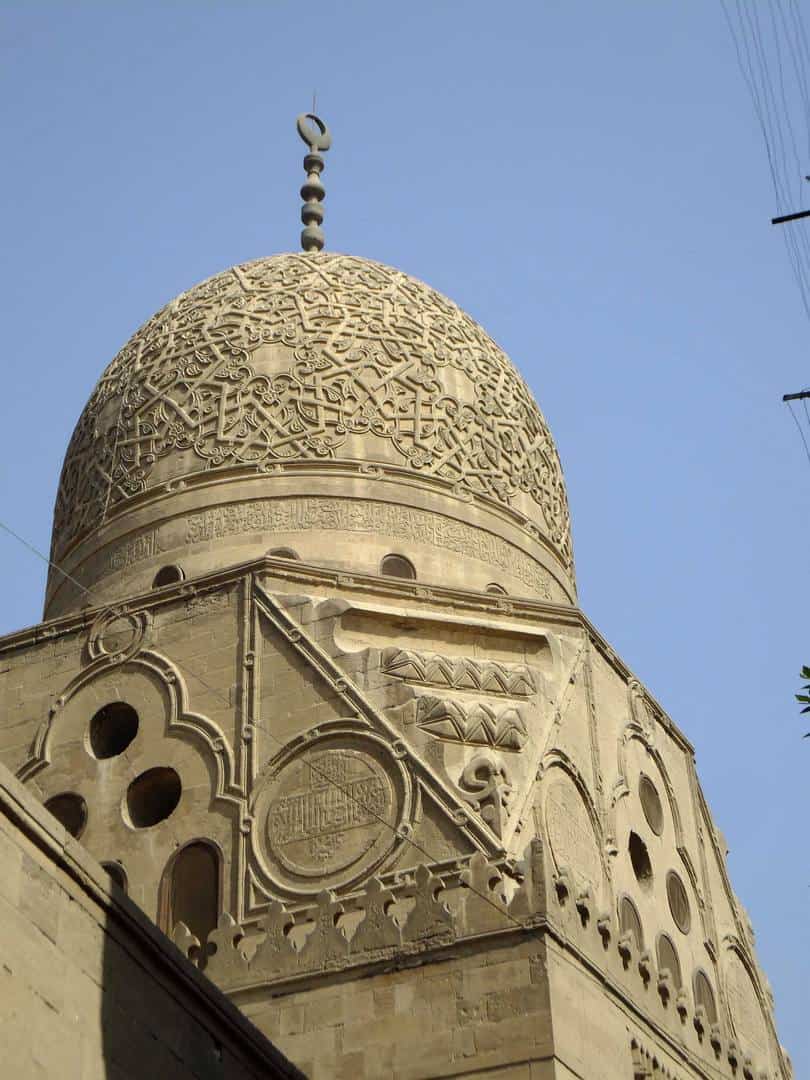
Historical Context
Rise of Sultan Al-Ashraf Qaytbay
Sultan Al-Ashraf Qaytbay was a prominent Mamluk sultan who ruled Egypt from 1468 to 1496. He was born in 1416 in the city of Qaytbay in Palestine. Due to his military and administrative skills, Qaytbay rose to power in the Mamluk court. He was appointed governor of Aleppo and later became governor of Damascus. In 1468, he was elected sultan of Egypt.
During his reign, Sultan Qaytbay commissioned the construction of several monuments, including the mosque and mausoleum that bears his name. He was a great patron of Mamluk architecture and is credited with commissioning many of the finest examples of Mamluk art and architecture.
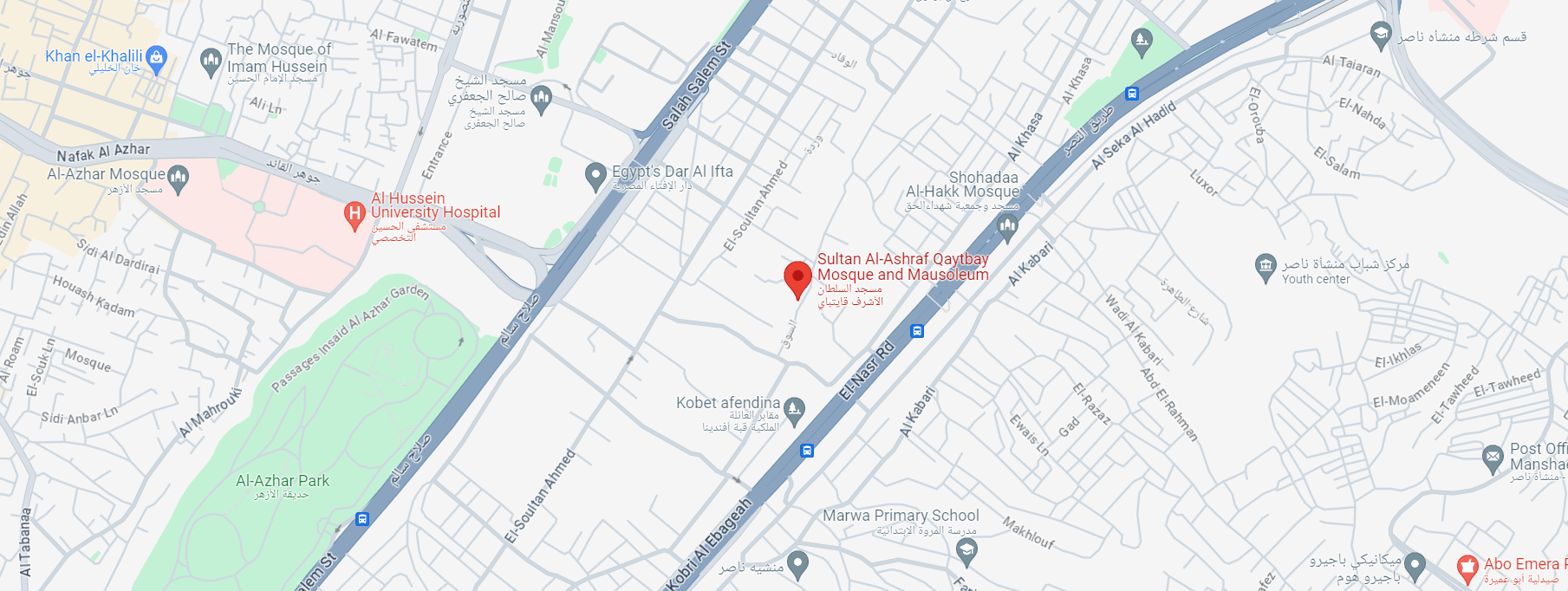
Mamluk Sultanate and Islamic Egypt
The Mamluk Sultanate was a medieval Islamic state that ruled Egypt and Syria from 1250 until 1517. The Mamluks were a slave dynasty that rose to power after overthrowing the Ayyubid dynasty. They were of Turkish and Circassian origin and were trained as soldiers and administrators. Outstanding cultural and artistic achievements marked the Mamluk period. The Mamluks were known for their patronage of the arts, especially architecture. They built many magnificent mosques, madrasas, and other public buildings that still stand today.
Islamic Egypt during the Mamluk period was a center of learning and culture. It was home to many great scholars, artists, and poets. The Mamluk sultans were great patrons of the arts and sciences and encouraged the development of new ideas and innovations. The Mamluk Sultanate ended in 1517 when the Ottoman Empire conquered it. Despite this, the legacy of the Mamluks lives on in the many magnificent buildings and works of art they left behind.
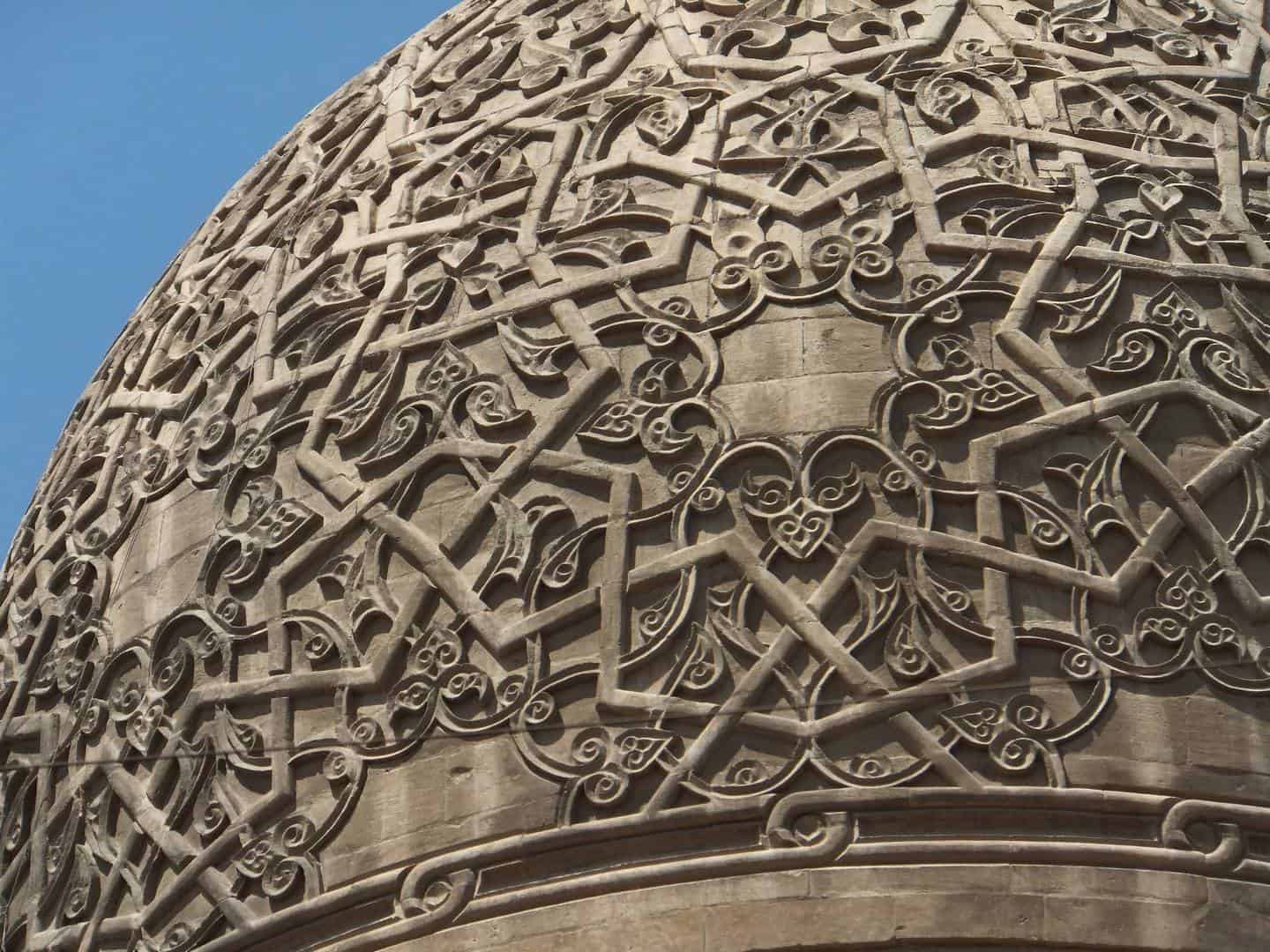
Architectural Significance
Mamluk Architecture
The Sultan Al-Ashraf Qaytbay Mosque and Mausoleum is a prime example of Mamluk architecture, which flourished during the Mamluk Sultanate of Egypt and Syria from the 13th to 16th centuries. Mamluk architecture is known for its intricate designs, geometric patterns, and ornate decorations that reflect Islamic artistic traditions. The mosque and mausoleum complex showcase the Mamluk style using iwan, muqarnas, and arabesque motifs.
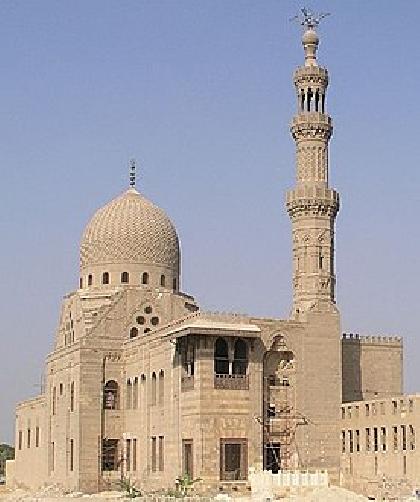
Design and Proportions
The mosque and mausoleum complex is rectangular and features a central courtyard encircled by a sequence of iwans or vaulted halls. The primary prayer hall is situated on the qibla wall, facing the mihrab that marks the direction towards Mecca. The dome, the most prominent feature of the complex, is located above the central hall. The minaret, one of the tallest in Cairo, is located at the complex’s northwest corner.
The complex proportions of the mosque and mausoleum are carefully balanced and harmonious, reflecting the Mamluk’s fascination with geometry and mathematics. The dimensions of the courtyard, the iwans, and the dome are all proportionate, creating a sense of unity and coherence.
Artistic Decorations
The Sultan Al-Ashraf Qaytbay Mosque and Mausoleum’s artistic decorations are a testament to the skill and impression of the Mamluk artisans. The mosque’s interior is adorned with intricate wood carvings, stucco reliefs, and geometric patterns. The wooden ceiling of the main prayer hall stands out notably for its elaborate designs and calligraphy.
The exterior of the mosque is imposing. It uses able masonry, a technique that alternates between black and white stones to create a striking visual effect. The minaret is decorated with geometric patterns and inscriptions, while the dome is adorned with intricate muqarnas and decorative vaulting.
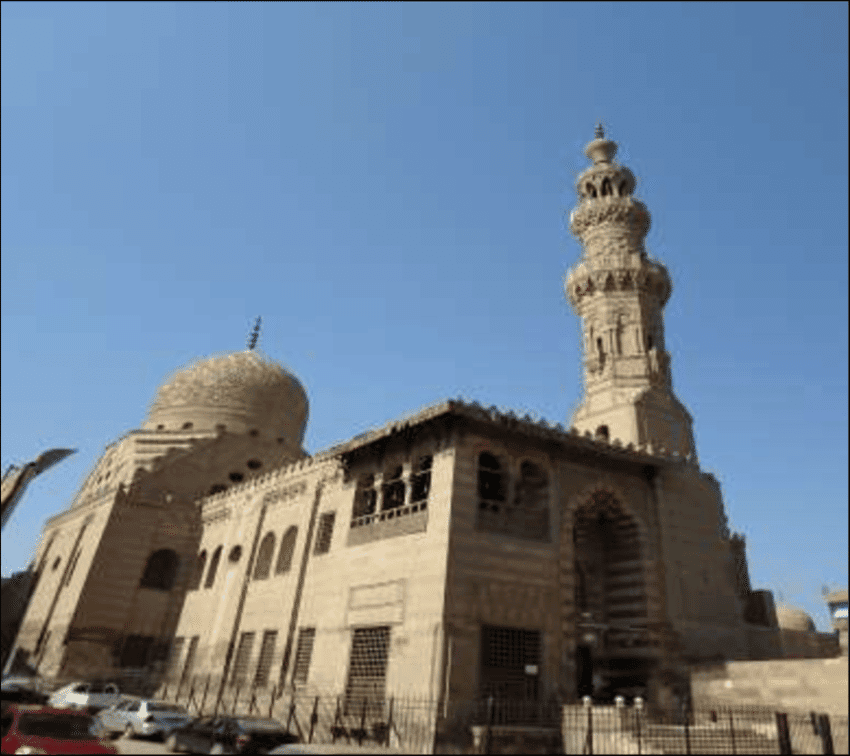
Cultural and Religious Significance
Religious Affiliation and Practices
The Sultan Al-Ashraf Qaytbay Mosque and Mausoleum is a significant religious site for Muslims in Egypt and around the world. As an Islamic mosque, it is a place of worship, prayer, and spiritual reflection for Muslims who follow the teachings of the Quran. The mosque also symbolizes Islam’s rich cultural and historical heritage in Egypt and the wider Middle East region.
The mosque holds particular significance for Sunni Muslims, who constitute the majority of Muslims globally. Sunni Muslims adhere to the teachings of Prophet Muhammad and emphasize the Quran’s importance as the holy scripture of Islam. The Sultan Al-Ashraf Qaytbay Mosque and Mausoleum is where Sunni Muslims can come together to pray, study the Quran, and learn about their faith.
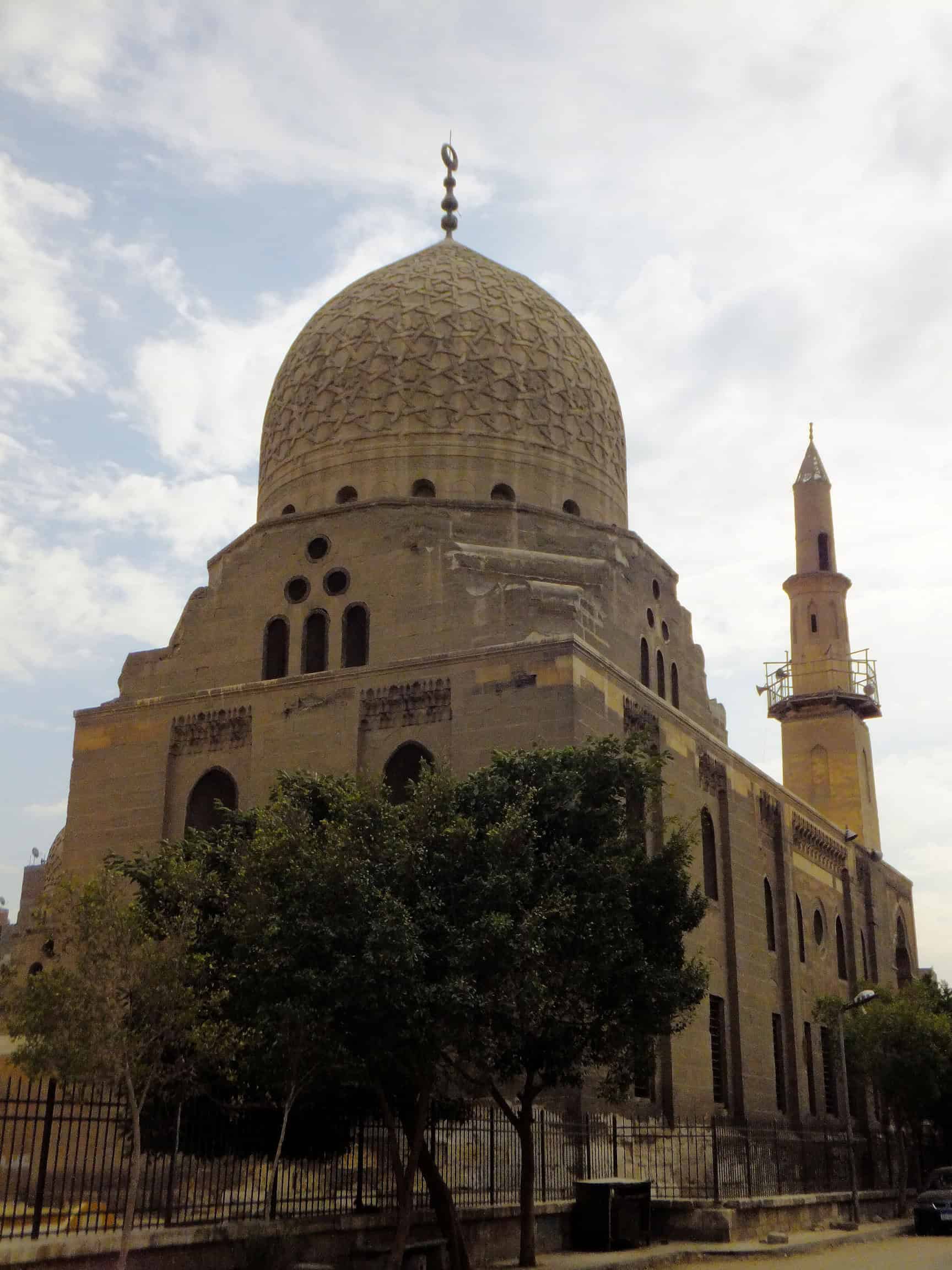
Educational Role of the Madrasa
The Sultan Al-Ashraf Qaytbay Mosque and Mausoleum also houses a madrasa, an Islamic educational institution with a long history. Madrasas are known for their focus on studying the Quran, Islamic law, and other religious subjects.
The madrasa at the Sultan Al-Ashraf Qaytbay Mosque and Mausoleum were vital in educating young Muslims in Egypt during the Mamluk period. Students who attended the madrasa would study the Quran and other religious texts, mathematics, astronomy, and medicine. In addition to the madrasa, the mosque includes a sail, a public fountain, and a school. The sail was an essential institution in Islamic society, providing clean drinking water and education to people of all ages and backgrounds.
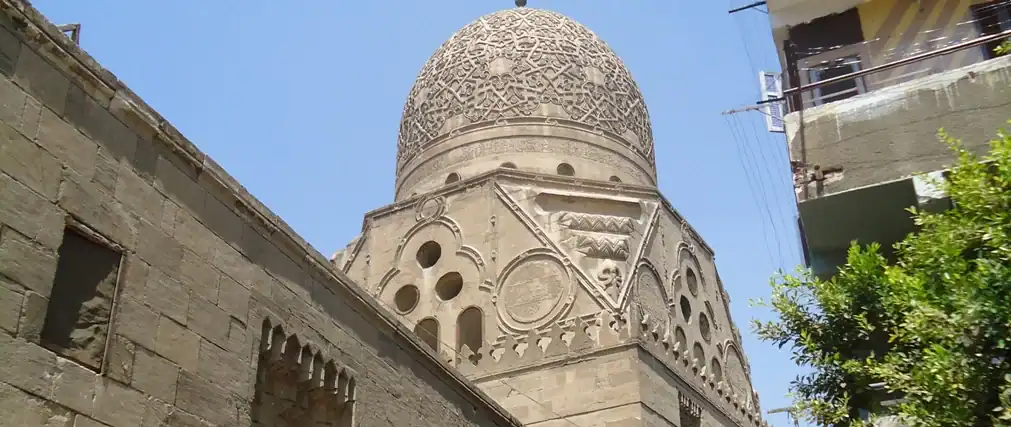
Conservation and Restoration Efforts
Historical Preservation
The Sultan Al-Ashraf Qaytbay Mosque and Mausoleum are Egypt’s significant historical and cultural landmarks. As such, they have undergone several conservation and restoration efforts to preserve their unique architecture and cultural significance. The Comité de Conservation des Monuments de l’Art Arabe has been instrumental in the preservation of the mosque and mausoleum. Established in 1881, this committee is responsible for conserving several historical monuments in Egypt.
The mosque and mausoleum were declared a UNESCO World Heritage Site in 1979, which further heightened the importance of preserving the site. The UNESCO recognition has helped maintain the mosque and mausoleum, and funding has been received from various sources for restoration and conservation efforts.
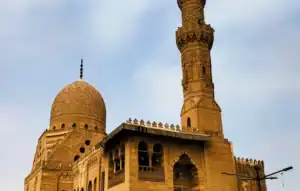
Modern Interventions
Several modern interventions have been made to the mosque and mausoleum to ensure its preservation. Restoration efforts have included repairing the dome, the minaret, and the mosque’s walls and preserving the intricate decorations and carvings on the mosque’s walls.
The restoration and conservation work have been carried out with the utmost care and attention to detail, ensuring that the original architecture and design of the mosque and mausoleum are preserved. The restoration work has been carried out by experts in the field of conservation and restoration, and the materials used in the restoration have been carefully selected to ensure that they are in harmony with the original materials utilized in constructing the mosque and mausoleum.
Visiting the Complex
Location and Accessibility
Sultan Al-Ashraf Qaytbay’s funerary complex is located in Cairo’s Northern Cemetery and is easily accessible by taxi or public transportation. Visitors may use a map to navigate the cemetery and find the complex.
Visitor Experience
Upon entering the complex, visitors are greeted with stunning urban architecture that is a testament to the refinement and mastery of Mamluk’s artistry. The main building is a mosque attached to Qaytbay’s mausoleum, while other parts of the complex include residential structures, an animal drinking trough, and a smaller tomb. Visitors may explore the complex and admire the buildings’ intricate details and stunning decorations. They can also pay their respects to Qaytbay and learn about his life and legacy through informative plaques and displays.
EGYPT MLS
Egypt MLS, under Arab MLS, is a cutting-edge real estate platform for licensed professionals, realtors, and brokers in Egypt. It offers a comprehensive property database for easy searching, comparing, and booking of properties for sale, set to revolutionize the real estate industry in Egypt.

Frequently Asked Questions(FAQs):
What is the historical significance of the Al-Ashraf Qaytbay Mosque and Mausoleum?
The Al-Ashraf Qaytbay Mosque and Mausoleum is a significant historical and cultural monument in Egypt. It was built during the Mamluk period, a time of outstanding artistic and architectural achievement in Egypt. The mosque and mausoleum are notable for their impressive design and intricate decoration, which showcase the skill and creativity of the artisans responsible for their construction.
When was the Al-Ashraf Qaytbay Mosque and Mausoleum built, and who commissioned its construction?
The Al-Ashraf Qaytbay Mosque and Mausoleum was built between 1472 and 1474 by Sultan Al-Ashraf Qaytbay, one of Mamluk architecture’s most significant patrons. The complex includes a mosque, a madrasa (Islamic school), a sabil (public water fountain), and a mausoleum, which contains the tomb of Sultan Qaytbay.
What are the architectural features that distinguish the Al-Ashraf Qaytbay Mosque and Mausoleum?
The Al-Ashraf Qaytbay Mosque and Mausoleum is known for its impressive architectural features, which include a large central dome, a minaret, and a courtyard surrounded by four iwans (vaulted halls). The mosque also features intricate decoration, including geometric patterns, calligraphy, and floral motifs carved into the stone and plaster surfaces.
How do the Al-Ashraf Qaytbay Mosque and Mausoleum reflect Islamic architecture in Egypt?
The Al-Ashraf Qaytbay Mosque and Mausoleum are prime examples of Islamic architecture in Egypt. It reflects the traditional Islamic design principles of symmetry, balance, and harmony, evident in the mosque’s geometric patterns, calligraphy, and manipulation of light and shadow. The mosque also incorporates elements of local Egyptian architecture, such as carved stone and plaster decoration.
What is the relationship between the Al-Ashraf Qaytbay Mosque, Mausoleum, and other Islamic monuments in Cairo?
The Al-Ashraf Qaytbay Mosque and Mausoleum is part of a larger complex of Cairo’s Islamic monuments, including other mosques, madrasas, and mausoleums. These monuments reflect Egypt’s rich history and cultural heritage and are vital to the country’s Islamic heritage.
Can visitors access the Al-Ashraf Qaytbay Mosque and Mausoleum, and are there any visitor guidelines to be aware of?
Yes, visitors can access the Al-Ashraf Qaytbay Mosque and Mausoleum. However, visitors should know specific guidelines, such as dressing modestly, removing their shoes before entering the mosque, and refraining from taking photographs during prayer times. Visitors should also respect the mosque’s religious significance and avoid causing disturbances.










